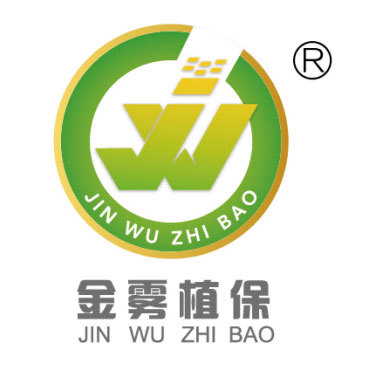Technical Key Points of Forestry Science and Technology Disaster Relief and Mitigation in Response to Severe Drought
Release time:
2024-06-28 11:58
1. Seedling Production and Drought Resistance Management in Nursery
Spring is the key period for most tree species to blossom, sow and start a new round of seedling growth cycle. Excessive drought will adversely affect the normal physiological process and flower bud differentiation of trees or seedlings, as well as the smooth emergence of seeds after sowing, which will lead to the decline of the yield and quality of forest seeds and seedlings, and affect the smooth development of forestry production. According to the weather and drought, soil moisture, combined with forest and species conditions, scientific analysis and effective measures can greatly reduce the harm caused by extreme drought and minimize the loss.
1. Management of drought resistance in seed production
According to the soil moisture, the seed garden and ear-picking nursery should be irrigated timely and scientifically to promote the normal growth of trees, but irrigation should not be carried out during flower bud differentiation. Water-saving irrigation methods should be used as much as possible during irrigation. For example, sprinkler irrigation saves about 30%-50% of water compared with surface irrigation. Based on the physiological water consumption of trees and the law of temperature change in different regions, the water supply rules for sprinkler irrigation are formulated, which is the theoretical basis for the scientific water use of irrigation in the seed base. No irrigation conditions of the mother forest, should be used to reduce soil moisture evaporation mulching method. In addition, the forest should be timely weeding, cut off the soil capillary, reduce soil water evaporation.
Seed reserve and forecast Although the measures taken can play a positive role in promoting the flowering and fruiting of forest trees, it may still lead to the reduction of seed quality and yield. Therefore, attention should be paid to the reserve of seeds, the forecast of seed yield this year and the pre-purchase of seeds for next year.
2. Drought resistance management of seedling production
Generally, when establishing a nursery, you will choose a place with sufficient water and guaranteed irrigation, but in the event of a severe drought, you should irrigate in time according to the weather and soil moisture. In the case of lack of water, the nursery production should adopt drought resistance measures to ensure the normal growth of seedlings and improve the quality and yield of seedlings.
(1) Drought-resistant sowing and seedling raising
Under severe drought conditions, deep ploughing and fine raking should be carried out before sowing, and low-bed seedling cultivation is beneficial to soil moisture preservation.
Seed germination in the lack of water and poor soil moisture, seeds should not be sprouted.
Soil treatment in order to prevent drought caused by pests and diseases, should strengthen the soil disinfection treatment, such as spraying the soil with 2%-3% ferrous sulfate liquid for disinfection.
Seed treatment to prevent seedling diseases, such as sudden fall disease, the application of 0.5 potassium permanganate and other liquid immersion disinfection treatment, after immersion with water rinse. Note that the seed embryo has broken through the seed coat, do not use potassium permanganate disinfection.
In the case of drought and insufficient water source, the seeding method is to open a ditch in the finished seedbed, then fill the bottom of the ditch with water. After the water penetrates into the soil, the treated seeds are sown in the ditch, covered with moist soil, suppressed to be solid, the seeds are closely connected with the soil, and then covered with film to maintain the soil moisture. After the seedlings are fully released, the film is removed.
(2) Drought-resistant hardwood cutting seedling
When carrying out cuttings to raise seedlings, irrigation should be carried out first, and when the soil moisture is suitable, mulching cuttings should be used to raise seedlings. The specific methods are as follows:
It is advisable to make ridges with narrow ridges, and the height of ridges should not exceed 15cm. After the ridge is completed, the top and both sides are pat down to make the soil dense and conducive to the rise of capillary water.
The cuttings were treated with water immersion treatment or ABT rooting powder, indoleacetic acid, naphthalene acetic acid and other solutions to promote rooting.
Film mulching cuttings should be covered before cutting, and then cutting. When cutting, use a wooden stick similar to the thickness of the cuttings to punch holes. After inserting the cuttings, cover the holes with wet soil, and then compact the soil from the side. This method is close to the ground, which is not only conducive to moisture preservation, but also can prevent weeds from overgrowth and improve the survival rate of cutting.
(3) Inoculation of mycorrhizal fungi
Mycorrhizae can greatly improve the drought resistance of seedlings, and Pt mycorrhizae can be used to inoculate seedlings.
(4) Seedling raising and transplanting
Due to the severe drought in the soil and the increase in temperature, it is necessary to choose a windless cloudy day or morning and evening time for seedling initiation and transplantation. If the soil is too dry, the fibrous root of the root system will be seriously damaged when the seedling is started. Therefore, irrigation should be carried out one week before the seedling is started. Generally, the seedling can be started or transplanted when the soil water content is 60% of its saturated water content (I .e. the soil does not stick to the shovel).
(5) seedling protection
After the seedling, should pick up the edge of the seedling, and in the leeward cool place, according to the seedling quality standards for seedling classification. If the seedlings cannot be transported immediately, temporary dummy planting (covering the seedling root system with wet soil) should be carried out to protect the seedling root system from water loss. If long-distance transportation, in order to maintain the water balance of seedlings and prolong the vitality of seedlings, the root system of seedlings can be dipped in mud, soaked in water, dipped in water absorbing agent, etc. Transport materials can be made of materials with good moisture retention, such as plastic bags. In the process of transportation, timely inspection should be carried out. If the seedlings are found to be dry, water should be sprayed at any time.
3. Drought resistance management of nurseries
The management of existing seedlings in the nursery is mainly water management.
Irrigation times for the wet tree species, such as poplar, willow, paulownia, alder and other seedlings, due to weak growth, slow root growth and development, should be a small number of irrigation times; for Robinia pseudoacacia, white wax, Ailanthus, Pinus massoniana, Pinus tabulaeformis and other seedlings, due to drought tolerance, the soil moisture requirements are not high, the number of irrigation can be appropriate less.
In the seedling stage and seedling stage, although the water requirement of seedlings is not much, but more sensitive, should be timely a small amount of irrigation; in the fast-growing period of water demand is larger, should be less times more, each irrigation; in the seedling hardening period should be prohibited irrigation.
When the climate is arid and the soil moisture is serious, the irrigation times should be more and the irrigation amount can be larger. Sandy soil has poor water retention capacity and can be irrigated many times and less. Clay loam soil has strong water retention capacity, so it should be less and more. In short, each irrigation amount can ensure that the seedling root distribution layer is in a wet state.
The irrigation time is good in the morning or evening, which not only reduces water evaporation, but also does not affect the growth of seedlings due to rapid changes in soil temperature.
Related News
Stainless steel spiral nozzle for atomizing spray gun
In many nozzles, atomizing spray gun silicon carbide spiral nozzle is a great feature. With the continuous small spiral body, the slurry through the spiral line tangent and bump, constantly changing direction, spray into a thin sheet of concentric shaft cone, and the liquid from the nozzle cavity into the outlet of the channel are not hindered. The atomizing spray gun system still has high absorption power at low working pressure, and is approved by the system.
Spring is the key period for most tree species to blossom, sow and start a new round of seedling growth cycle. Excessive drought will adversely affect the normal physiological process and flower bud differentiation of trees or seedlings, as well as the smooth emergence of seeds after sowing, which will lead to the decline of the yield and quality of forest seeds and seedlings, and affect the smooth development of forestry production. According to the weather and drought, soil moisture, combined with forest and species conditions, scientific analysis and effective measures can greatly reduce the harm caused by extreme drought and minimize the loss.
Popular Science Knowledge: Precautions for Safe Operation of Agricultural Machinery
Plant protection machinery 1. The operator must understand the knowledge of the use of machinery and the nature of the agent, and master the measures to prevent poisoning and rescue methods. 2. The operator must wear protective equipment before operation. After operation, all body parts and protective equipment in contact with drugs must be washed with soap and water. 3. If the wound is not healed, lactating women, pregnant women, children and other personnel who are not suitable for operation shall not watch in the operation field. 4. The medicine box, pipeline and interface of the working machine shall not leak, and the working pressure shall not exceed the specified value during operation. The pressure in the box shall be removed before troubleshooting and disassembly of joints and nozzles.
Wheat to promote weak to strong so good spraying effect
If weeds are not treated in autumn in time before winter, chemical weeding can be carried out as early as possible from the period of winter wheat turning green to rising. The temperature fluctuates greatly in early spring, so clear weather should be selected for chemical weeding in wheat fields, and a boom sprayer should be used for chemical weeding from 10 am to 4 pm. Reasonable selection of boom sprayer, the use of boom sprayer for prevention and control operations, so as to achieve uniform spraying, no leakage of spray, no heavy spray, to prevent pesticide damage; The overlap of the handover line shall not be more than 3% of the working width, and the same crop in the same plot shall be completed within 3 days. It is not suitable to operate under the conditions of wind force exceeding level 3, heavy dew, rain and temperature above 30 ℃.






